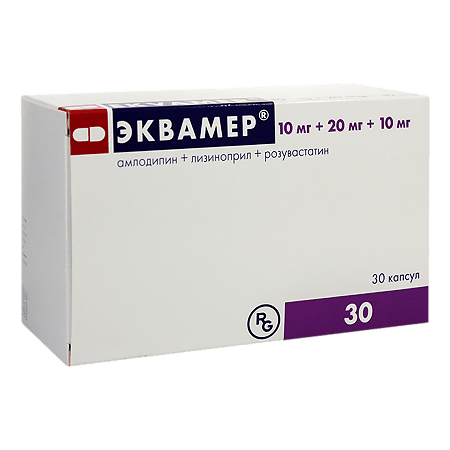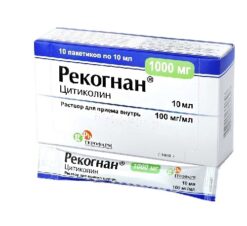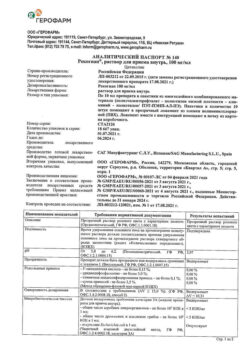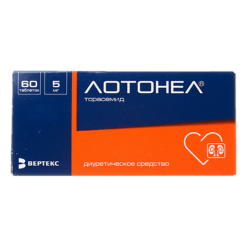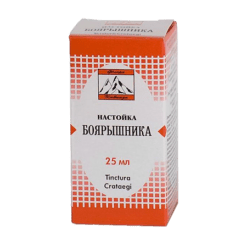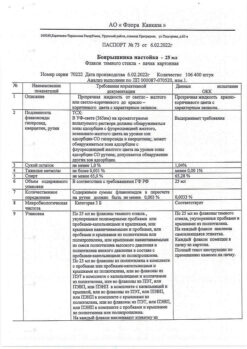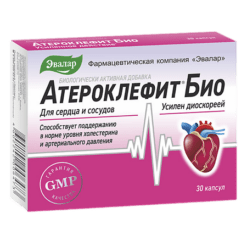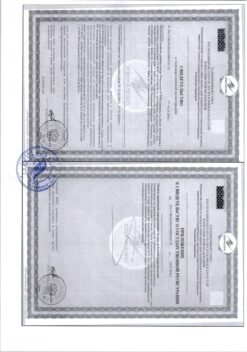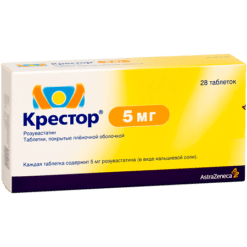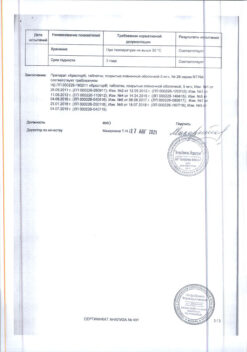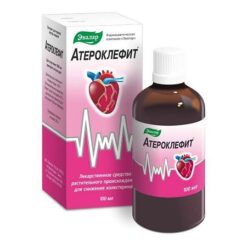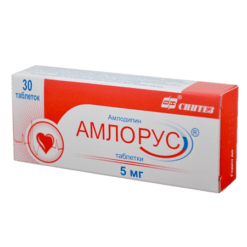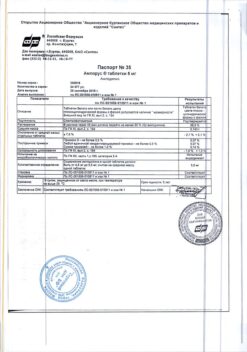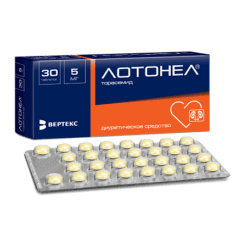No products in the cart.
Equamer, 10 mg+20 mg+10 mg capsules 30 pcs
€1.00
Out of stock
(E-mail when Stock is available)
Description
A combined antihypertensive and hypolipidemic drug. Three active substances – amlodipine, lisinopril and rosuvastatin – form part of the drug Equamer®. Mechanism of action of Equamer® is based on pharmacological properties of active ingredients.
Amlodipine
The dihydropyridine derivative is a slow calcium channel blocker (SCB) with hypotensive and antianginal effects. It blocks slow calcium channels, reduces transmembrane transition of calcium ions into the cell (more in vascular smooth muscle cells than in cardiomyocytes).
The antianginal action is due to the dilation of coronary and peripheral arteries and arterioles:
– in angina decreases the severity of myocardial ischemia; by dilating the peripheral arterioles, it reduces the RPS, reduces the afterload on the heart, reduces myocardial oxygen demand;
– By dilating coronary arteries and arterioles in unchanged and ischemic areas of the myocardium, increases the flow of oxygen to the myocardium (especially in vasospastic angina); prevents spasm of coronary arteries (including those caused by smoking).caused by smoking).
In patients with stable angina a single daily dose increases exercise tolerance, delays the development of angina attacks and ischemic ST-segment depression, reduces the frequency of angina attacks and consumption of nitroglycerin and other nitrates.
It has a long-term dose-dependent antihypertensive effect. The antihypertensive effect is due to a direct vasodilatory effect on vascular smooth muscle. In arterial hypertension a single dose provides clinically significant reduction of BP during 24 hours (in patient’s supine and standing position).
Orthostatic hypotension with amlodipine is rare. Amlodipine does not cause a decrease in exercise tolerance and left ventricular ejection fraction. It reduces the degree of left ventricular myocardial hypertrophy. It does not affect myocardial contractility and conduction, does not cause reflex increase in HR, inhibits platelet aggregation, increases FFR, has a weak natriuretic effect. In diabetic nephropathy it does not increase the severity of microalbuminuria. It does not have any adverse effect on metabolism and blood plasma lipid concentration and can be used for treatment of patients with bronchial asthma, diabetes and gout. The significant decrease of BP is observed after 6-10 hours, the duration of effect is 24 hours.
. In patients with diseases of the cardiovascular system (including coronary atherosclerosis with lesions of one vessel and up to stenosis of 3 or more arteries, atherosclerosis of the carotid arteries), who had myocardial infarction, percutaneous transluminal coronary angioplasty (PTCA) or in patients with angina pectoris the use of amlodipine prevents an increase in the thickness of intima-media carotid artery complex, reduces mortality from myocardial infarction, stroke, PTCA, aortocoronary bypass surgery; leads to a decrease in the number of hospitalizations for unstable angina and progression of chronic heart failure (CHF); reduces the frequency of interventions to restore coronary blood flow.
Does not increase risk of death or complications and lethal outcomes in patients with CHF (NYHA functional class III-IV) during therapy with digoxin, diuretics and ACE inhibitors. In patients with CHF (functional class III-IV according to NYHA classification) of non-ischemic etiology when using amlodipine there is a possibility of pulmonary edema.
Lisinopril
A ACE inhibitor, reduces angiotensin II formation from angiotensin I. Reducing the concentration of angiotensin II leads to a direct reduction in the release of aldosterone. Reduces bradykinin degradation and increases prostaglandin synthesis. Reduces OPPS, BP, preload, pulmonary capillary pressure, causes an increase in the minute blood volume and increases myocardial tolerance to exercise in patients with CHF. Dilates arteries more than veins. Some effects are attributed to the effect on the tissue renin-angiotensin system. Long-term use reduces myocardial hypertrophy and resistive arterial wall hypertrophy.
It improves the blood supply to the ischemic myocardium.
The ACE inhibitors prolong life expectancy in patients with CHF and slow the progression of left ventricular dysfunction in patients who have had a myocardial infarction without clinical manifestations of heart failure.
The onset of action is within 1 hour after oral administration. Maximal hypotensive effect is determined after 6-7 hours and sustained for 24 hours. In arterial hypertension the effect is noted in the first days after the start of treatment, a stable effect develops after 1-2 months. When lisinopril is abruptly withdrawn, no marked increase in BP has been noted. In addition to BP reduction, lisinopril reduces albuminuria. In patients with hyperglycemia, it normalizes the function of damaged glomerular endothelium. Lisinopril does not affect blood glucose concentration in patients with diabetes mellitus and does not lead to increased incidence of hypoglycemia.
Rosuvastatin
A selective, competitive inhibitor of HMG-CoA reductase, the enzyme that converts 3-hydroxy-3-methylglutaryl coenzyme A to mevalonate, a precursor of cholesterol. The main target of rosuvastatin action is the liver, where cholesterol (Chs) synthesis and LDL catabolism take place.
Rosuvastatin increases the number of LDL receptors on the surface of hepatocytes, increasing the capture and catabolism of LDL, which in turn leads to the inhibition of LDL synthesis, thereby reducing the total amount of LDL and LDL-C.
. Rosuvastatin reduces elevated concentrations of LDL cholesterol (HDL-C), total cholesterol (TC) and triglycerides (TG) and increases the concentration of high-density lipoprotein cholesterol (HDL-C), and decreases the concentration of apolipoprotein B (ApoB), Chs-non-LDL, Chs-LDL, TG-LDL, and increases the concentration of apolipoprotein A-I (ApoA-I) (see Tables 1 and 2), decreases the ratio of hs-LDL/Hs-LDL, total hs/Hs-LDL, hs-non-LDL/Hs-LDL, and the apoB/apoA-I ratio.
Therapeutic effect appears within the first week after the start of therapy with rosuvastatin and after 2 weeks of treatment reaches 90% of the maximum possible. Maximum therapeutic effect is usually reached by 4 weeks and is maintained with regular administration.
Indications
Indications
Equamer® is indicated as replacement therapy in adult patients whose condition is already adequately controlled by taking amlodipine, lisinopril and rosuvastatin in the same doses as Equamer®, in the treatment of arterial hypertension and concomitant dyslipidemia:
primary hypercholesterolemia (type Pa according to the Fredrickson classification, with the exception of familial heterozygous hypercholesterolemia) or mixed hypercholesterolemia (type II according to the Fredrickson classification), when diet and other non-drug methods (for example, exercise, weight loss) are insufficient;
familial homozygous hypercholesterolemia, when diet or other lipid-lowering therapy (eg, LDL apheresis) is not effective enough;
hypertriglyceridemia (type IV according to the Fredrickson classification).
Pharmacological effect
Pharmacological effect
Combined antihypertensive and lipid-lowering drug. The drug Equamer® contains three active ingredients – amlodipine, lisinopril and rosuvastatin. The mechanism of action of the drug Equamer® is based on the pharmacological properties of the active substances.
Amlodipine
The dihydropyridine derivative is a slow calcium channel blocker (SCBC), has a hypotensive and antianginal effect. Blocks slow calcium channels, reduces the transmembrane transition of calcium ions into the cell (more into vascular smooth muscle cells than into cardiomyocytes).
The antianginal effect is due to the expansion of coronary and peripheral arteries and arterioles:
– in case of angina pectoris, it reduces the severity of myocardial ischemia; by expanding peripheral arterioles, it reduces peripheral vascular resistance, reduces afterload on the heart, and reduces myocardial oxygen demand;
– expanding the coronary arteries and arterioles in unchanged and ischemic areas of the myocardium, increases the supply of oxygen to the myocardium (especially with vasospastic angina); prevents spasm of the coronary arteries (including those caused by smoking).
In patients with stable angina, a single daily dose increases exercise tolerance, slows the development of angina attacks and ischemic depression of the ST segment, reduces the frequency of angina attacks and the consumption of nitroglycerin and other nitrates.
It has a long-term dose-dependent antihypertensive effect. The antihypertensive effect is due to a direct vasodilating effect on vascular smooth muscle. For arterial hypertension, a single dose provides a clinically significant reduction in blood pressure over 24 hours (with the patient lying and standing).
Orthostatic hypotension with amlodipine is quite rare. Amlodipine does not cause a decrease in exercise tolerance or left ventricular ejection fraction. Reduces the degree of left ventricular myocardial hypertrophy. It has no effect on myocardial contractility and conductivity, does not cause a reflex increase in heart rate, inhibits platelet aggregation, increases GFR, and has a weak natriuretic effect. In diabetic nephropathy, it does not increase the severity of microalbuminuria. It does not have any adverse effect on metabolism and the concentration of plasma lipids; it can be used in the treatment of patients with bronchial asthma, diabetes mellitus and gout. A significant decrease in blood pressure is observed after 6-10 hours, the duration of the effect is 24 hours.
In patients with diseases of the cardiovascular system (including coronary atherosclerosis with damage to one vessel and up to stenosis of 3 or more arteries, atherosclerosis of the carotid arteries), who have had myocardial infarction, percutaneous transluminal coronary angioplasty (PTCA) or in patients with angina pectoris, the use of amlodipine prevents an increase in the thickness of the intima-media complex of the carotid arteries, reduces mortality from myocardial infarction, stroke, PTCA, coronary artery bypass grafting; leads to a decrease in the number of hospitalizations for unstable angina and progression of chronic heart failure (CHF); reduces the frequency of interventions aimed at restoring coronary blood flow.
Does not increase the risk of death or the development of complications and deaths in patients with CHF (III-IV functional class according to the NYHA classification) during therapy with digoxin, diuretics and ACE inhibitors. In patients with CHF (III-IV functional class according to the NYHA classification) of non-ischemic etiology, when using amlodipine, there is a risk of pulmonary edema.
Lisinopril
An ACE inhibitor, reduces the formation of angiotensin II from angiotensin I. A decrease in the concentration of angiotensin II leads to a direct decrease in the release of aldosterone. Reduces the degradation of bradykinin and increases the synthesis of prostaglandins. Reduces peripheral vascular resistance, blood pressure, preload, pressure in the pulmonary capillaries, causes an increase in minute blood volume and an increase in myocardial tolerance to physical activity in patients with CHF. Dilates arteries more than veins. Some effects are explained by effects on the tissue renin-angiotensin system. With long-term use, hypertrophy of the myocardium and the walls of resistive arteries decreases.
Improves blood supply to ischemic myocardium.
ACE inhibitors extend life expectancy in patients with CHF and slow the progression of left ventricular dysfunction in patients who have suffered a myocardial infarction without clinical manifestations of heart failure.
The onset of action is 1 hour after oral administration. The maximum hypotensive effect is determined after 6-7 hours and persists for 24 hours. In arterial hypertension, the effect is observed in the first days after the start of treatment, a stable effect develops after 1-2 months. When lisinopril was abruptly discontinued, no significant increase in blood pressure was observed. In addition to lowering blood pressure, lisinopril reduces albuminuria. In patients with hyperglycemia, it helps normalize the function of damaged glomerular endothelium. Lisinopril does not affect blood glucose concentrations in patients with diabetes mellitus and does not lead to an increase in cases of hypoglycemia.
Rosuvastatin
A selective, competitive inhibitor of HMG-CoA reductase, an enzyme that converts 3-hydroxy-3-methylglutaryl coenzyme A into mevalonate, a cholesterol precursor. The main target of action of rosuvastatin is the liver, where cholesterol (C) synthesis and LDL catabolism occur.
Rosuvastatin increases the number of LDL receptors on the surface of hepatocytes, increasing the uptake and catabolism of LDL, which in turn leads to inhibition of VLDL synthesis, thereby reducing the total number of LDL and VLDL.
Rosuvastatin reduces the elevated concentrations of LDL cholesterol (LDL-C), total cholesterol (C) and triglycerides (TG) and increases the concentration of high-density lipoprotein cholesterol (HDL-C), and also reduces the concentration of apolipoprotein B (ApoB), non-HDL-C, VLDL-C, TG-VLDL and increases the concentration of apolipoprotein A-I (ApoA-I) (see tables 1 and 2), reduces the ratio of LDL-C/HDL-C, total C/HDL-C, non-HDL-C/HDL-C and the ApoB/ApoA-I ratio.
The therapeutic effect appears within the first week after starting rosuvastatin therapy and after 2 weeks of treatment reaches 90% of the maximum possible. The maximum therapeutic effect is usually achieved by week 4 and is maintained with regular use.
Special instructions
Special instructions
If you are hospitalized, tell your doctor that you are taking Equamer®.
If you forget to take a capsule of Equamer®, wait and take the next capsule at the usual time. Do not take a double dose to make up for a missed dose.
When using the drug Equamer®, you should take into account the recommendations for the use of individual components of the drug, described in detail below.
Amlodipine
It is necessary to maintain dental hygiene and follow-up with a dentist (to prevent pain, bleeding and gum hyperplasia). In elderly patients, T½ may increase and the clearance of amlodipine may decrease. Dose changes are not required, but more careful monitoring is required in 5 patients in this category.
The effectiveness and safety of amlodipine in hypertensive crisis has not been established.
Despite the absence of withdrawal syndrome in BMCC, it is advisable to discontinue treatment with amlodinine by gradually reducing the dose of the drug.
When using amlodipine in patients with non-ischemic heart failure of functional class III and IV according to the NYIIA classification, an increase in the incidence of pulmonary edema was observed, despite the absence of signs of worsening heart failure.
Lisinopril
Symptomatic hypotension
Most often, a pronounced decrease in blood pressure occurs with a decrease in blood volume caused by diuretic therapy, a decrease in sodium chloride in food, dialysis, diarrhea and vomiting (see sections “Interaction with other drugs” and “Side effects”). In patients with CHF, both in the presence of concomitant renal failure and in its absence, symptomatic arterial typotension may develop. It was more often detected in patients with severe heart failure as a result of the use of large doses of diuretics, hyponatremia or impaired renal function. In such patients, therapy should be started under the strict supervision of a physician (with caution in selecting the dose of lisinopril and diuretics). Similar rules must be followed when prescribing lisinopril to patients with coronary heart disease, cerebrovascular insufficiency, in whom a sharp decrease in blood pressure can lead to myocardial infarction or stroke.
In case of a pronounced decrease in blood pressure, the patient should be laid down and, if necessary, fluid loss should be replaced (intravenous infusion of 0.9% sodium chloride solution). A transient hypotensive reaction is not a contraindication to the next dose of lisinopril.
When using lisinopril, some patients with CHF, but with normal or reduced blood pressure, may experience a decrease in blood pressure, which is usually not a reason to discontinue therapy. If arterial hypotension becomes symptomatic, it is necessary to reduce the dose or discontinue therapy with lisinopril.
In patients at risk of developing symptomatic arterial hypotension (those on a salt-restricted or salt-free diet) with or without hyponatremia, as well as in patients who have received high doses of diuretics, it is necessary to compensate for the loss of fluid and salts before starting treatment.
It is necessary to monitor the antihypertensive effect of the initial dose of lisinopril.
Aortic and mitral valve stenosis/hypertrophic obstructive cardiomyopathy
As with other ACE inhibitors, lisinopril should be administered with caution to patients with mitral valve stenosis and left ventricular outflow tract obstruction (aortic stenosis or hypertrophic obstructive cardiomyopathy).
Acute myocardial infarction
The use of standard therapy (thrombolytics, acetylsalicylic acid as an antiplatelet agent, beta-blockers) is indicated.
Lisinopril can be used in conjunction with intravenous nitroglycerin or using transdermal nitroglycerin systems.
Lisinopril therapy should not be initiated in patients with acute myocardial infarction who are at risk of further severe hemodynamic deterioration after use of vasodilators (patients with systolic blood pressure 100 mmHg or lower, patients with cardiogenic shock). During the first 3 days after myocardial infarction, the dose of lisinopril should be reduced if systolic blood pressure is 120 mmHg. Art. or lower. Maintenance doses of lisinopril should be reduced to 5 mg or temporarily to 2.5 mg if systolic blood pressure is 100 mmHg. Art. or lower. If arterial hypotension persists (systolic blood pressure less than 90 mm Hg for more than 1 hour), lisinopril should not be continued.
Renal dysfunction
In patients with CHF, a pronounced decrease in blood pressure after initiation of treatment with ACE inhibitors may lead to further deterioration of renal function. Cases of acute renal failure have been reported.
In patients with bilateral renal artery stenosis or solitary renal artery stenosis treated with ACE inhibitors, there was an increase in serum urea and creatinine concentrations, usually reversible after discontinuation of treatment and more common in patients with renal failure.
Lisinoporil is not used for acute myocardial infarction in patients with severely impaired renal function, as determined by a change in serum creatinine concentration exceeding 177 µmol/l and/or proteinuria exceeding 100 mg/day. If renal dysfunction develops during lisinopril therapy (serum creatinine concentration exceeding 265 μmol/L, or doubling the value compared to the value before treatment), the physician should evaluate the need for continued use of lisinopril.
Hypersensitivity/Angioedema
Angioedema of the face, extremities, lips, tongue, epiglottis and/or larynx, which may occur during any period of therapy, has been reported rarely in patients treated with an ACE inhibitor, including lisinopril. In this case, therapy with lisinopril should be discontinued as soon as possible and the patient should be monitored until complete regression of symptoms. In cases where swelling occurs only on the face and lips, this condition most often goes away without treatment, but the use of antihistamines is possible.
Angioedema with laryngeal edema can be fatal. Swelling of the tongue, epiglottis or larynx can cause airway obstruction, so it is necessary to immediately provide appropriate therapy (0.3-0.5 ml of 1:1000 epinephril (adrenaline) solution subcutaneously) and/or take measures to ensure airway patency. It was noted that in patients of the Negroid race taking ACE inhibitors, angioedema developed more often than in patients of other races.
In patients taking ACE inhibitors. Intestinal angioedema was rarely observed. These patients complained of abdominal pain (with or without nausea and vomiting); in some cases, no previous facial angioedema was observed and C-1 esterase activity was within normal limits. Intestinal angioedema was diagnosed by computed tomography of the gastrointestinal tract or ultrasound, or by surgery; symptoms disappeared after discontinuation of the ACE inhibitor. When conducting a differential diagnosis of abdominal pain in patients taking ACE inhibitors, the development of intestinal angioedema should be taken into account.
Patients with a history of angioedema not related to previous treatment with ACE inhibitors may be at increased risk of developing it during treatment with an ACE inhibitor (see also section “Contraindications”)
Anaphylactic reactions during desensitization procedures
In patients receiving ACE inhibitors during a course of desensitization (for example, hymenoptera venom), in very rare cases, life-threatening anaphylactic reactions may develop. This can be avoided by temporarily discontinuing the ACE inhibitor before each desensitization procedure.
Liver dysfunction
The use of ACE inhibitors can lead to the development of cholestatic jaundice with progression up to fulminant liver necrosis, therefore it is necessary to stop taking lisinopril if the activity of “liver” transaminases increases and symptoms of cholestasis appear.
Patients on hemodialysis
Anaphylactic reactions have also been observed in patients undergoing hemodialysis using high-flow membranes (for example, AN69®) and concomitantly taking ACE inhibitors. If hemodialysis is necessary, a different type of membrane or a different antihypertensive drug must be used.
Cough
When using an ACE inhibitor, a “dry”, prolonged cough was noted, which disappeared after stopping treatment with the ACE inhibitor. In the differential diagnosis of cough, cough caused by the use of an ACE inhibitor must be taken into account.
Surgery/General anesthesia
In patients whose condition requires major surgery or general anesthesia with drugs that cause hypotension, lisinopril may block the formation of angiotensin II with compensatory renin release.
A pronounced decrease in blood pressure, which is considered a consequence of this mechanism, can be combined with an increase in circulating blood volume.
Before surgery (including dental surgery), the surgeon/anesthesiologist should be informed about the use of an ACE inhibitor.
Hyperkalemia
Cases of hyperkalemia have been reported.
Risk factors for the development of hyperkalemia include renal failure, diabetes mellitus and concomitant use of potassium-sparing diuretics (spironolactone, eplerenone (spironolactone derivative), triamterene and amiloride), potassium supplements or salt substitutes containing potassium, especially in patients with impaired renal function.
If simultaneous use of lisinopril and these drugs is necessary, it is recommended to take precautions and regularly monitor potassium levels in the blood serum.
Patients with diabetes
In patients with diabetes mellitus taking oral hypoglycemic drugs or receiving insulin, plasma glucose concentrations should be carefully monitored during the first month of treatment with an ACE inhibitor.
Dual blockade of the RAAS with angiotensin II receptor antagonists (ARA II), ACE inhibitors or aliskiren
It has been proven that with the simultaneous use of angiotensin-H receptor antagonists, APA II), ACE inhibitors or aliskiren, the risk of developing arterial hypotension, hyperkalemia, and renal dysfunction (including acute renal failure) increases. For this reason, the combined use of ARB II, ACE inhibitors or aliskiren is not recommended.
If the use of this therapy is necessary, specialist supervision and careful monitoring of renal function, blood pressure and serum electrolytes are recommended.
ACE inhibitors, ARA II should not be used in patients with diabetic nephropathy.
Systemic connective tissue diseases
In patients with severe autoimmune systemic connective tissue diseases (including systemic lupus erythematosus, scleroderma), lisinopril should be used with caution.
Elderly patients
In elderly patients, the use of standard doses of lisinopril leads to higher concentrations of lisinopril in the blood, so special care is required when determining the dose, despite the fact that differences in the antihypertensive effect of lisinopril in elderly and young patients have not been identified.
Rosuvastatin
Proteinuria may be detected in patients receiving rosuvastatin. Changes in the amount of protein in the urine (from none or trace amounts to ++ or more) are observed in less than 1% of patients receiving 10-20 mg rosuvastatin and in approximately 3% of patients receiving 40 mg rosuvastatin. A slight change in the amount of protein in the urine was noted when taking a dose of 20 mg. In most cases, proteinuria decreases or disappears during therapy and does not indicate the onset of acute or progression of existing kidney disease.
From the musculoskeletal system
When using rosuvastatin in all dosages, and especially when taking doses exceeding 20 mg, the following undesirable side effects were reported: myalgia, myopathy, and in rare cases, rhabdomyolysis.
Determination of creatine phosphokinase activity
Determination of CPK activity should not be carried out after intense physical activity or in the presence of other possible reasons for increased CPK activity, which may lead to incorrect interpretation of the results obtained. If initially CPK activity is significantly increased (5 times higher than the upper limit of normal), a repeat measurement should be taken after 5-7 days. Therapy should not be initiated if a repeat test confirms baseline CPK activity (more than 5 times the upper limit of normal).
Before starting therapy
When prescribing rosuvastatin, as well as when prescribing other HMG-CoL reductase inhibitors, caution should be exercised in patients with existing risk factors for the development of myopathy/rhabdomyolysis (see section “With caution”).
It is necessary to consider the risk/benefit ratio of therapy and conduct clinical monitoring.
During therapy
The patient should be informed to immediately report to the doctor the unexpected onset of muscle pain, muscle weakness or cramps, especially in combination with malaise and fever. In such patients, CPK activity should be determined. Therapy should be discontinued if CPK activity is significantly increased (more than 5 times the upper limit of normal) or if muscle symptoms are severe and cause daily discomfort (even if CPK activity is 5 times less than 5 times the upper limit of normal).
If symptoms disappear and CPK activity returns to normal, re-prescribing rosuvastatin or other HMG-CoA reductase inhibitors in lower doses should be considered with careful monitoring of the patient.
Routine monitoring of CPK activity in the absence of symptoms is impractical.
There were no signs of increased effects on skeletal muscles when taking rosuvastatin and concomitant therapy. However, an increased incidence of myositis and myopathy has been reported in patients taking other HMG-CoA reductase inhibitors (statins) in combination with fibric acid derivatives, including emfibrozil, cyclosporine, nicotinic acid in lipid-lowering doses (more than 1 g/day), azole antifungals, protease inhibitors and macrolide antibiotics. Gemfibrozil increases the risk of myopathy when combined with certain HMG-CoA reductase inhibitors. Therefore, concomitant use of rosuvastatin and gemfibrozil is not recommended. The risk/benefit ratio should be carefully weighed when using rosuvastatin and fibrates or nicotinic acid in lipid-lowering doses (more than 1 g/day). Taking rosuvastatin at a dose of 40 mg together with fibrates is contraindicated (see section “Interaction with other drugs”).
2-4 weeks after starting treatment and/or increasing the dose of rosuvastatin, monitoring of lipid metabolism parameters is necessary (if necessary, adjust the dose of rosuvastatin).
Monitoring liver function
It is recommended to determine liver function indicators before starting therapy and 3 months after starting therapy. Rosuvastatin should be discontinued or its dose reduced if the activity of hepatic transaminases in the blood serum is 3 times higher than the upper limit of normal.
In patients with hypercholesterolemia due to hypothyroidism or nephrotic syndrome, treatment of underlying diseases should be carried out before starting treatment with rosuvastatin.
Race
During the study of pharmacokinetic parameters in patients belonging to the Mongoloid race, an increase in the systemic concentration of rosuvastatin was noted compared with that of Caucasian patients (see sections “Dosage and Administration” and “Pharmacokinetics”).
HIV protease inhibitors
The combined use of rosuvastatin with HIV protease inhibitors is not recommended (see section “Interaction with other drugs”).
Interstitial lung disease
Isolated cases of interstitial lung disease have been reported with the use of certain HMG-CoA reductase inhibitors (statins), especially over long periods of time. Manifestations of the disease may include shortness of breath, nonproductive cough and deterioration in general health (weakness, weight loss and fever). If interstitial lung disease is suspected, patin therapy should be discontinued.
Diabetes mellitus type 2
In patients with fasting glucose concentrations between 5.6 and 6.9 mmol/L, rosuvastatin therapy was associated with an increased risk of developing type 2 diabetes mellitus.
Excipients
Lactose
The drug Equamer® with a dosage of 5 mg + 10 mg + 10 mg and a dosage of 10 mg + 20 mg + 10 mg contains 48.10 mg of lactose monohydrate in each capsule. The drug Equamer® with a dosage of 5 mg + 10 mg + 20 mg and a dosage of 10 mg + 20 mg + 20 mg contains 96.20 mg of lactose monohydrate in each capsule.
Patients with rare hereditary diseases such as lactose intolerance, Lapp lactase deficiency or glucose-galactose malabsorption should not take Equamer®.
Azorubine dye
Equamer® contains the food coloring azorubine.
Azorubia may cause allergic reactions.
Sunset yellow dye
The drug Equamer® in dosages of 5 mg + 10 mg + 10 mg and 10 mg + 20 mg + 20 mg contains sunset yellow food coloring.
Sunset yellow food coloring can cause allergic reactions.
Impact on the ability to drive vehicles and machinery
There are no data on the effect of the drug on the ability to drive vehicles and machines. Due to a possible excessive decrease in blood pressure, the occurrence of dizziness, drowsiness and similar side effects, caution should be exercised when performing potentially dangerous activities that require special attention and quick reactions (driving a car and other vehicles, working with moving mechanisms, working as a dispatcher and operator, etc.).
Active ingredient
Active ingredient
Amlodipine, Lisinopril, Rosuvastatin
Composition
Composition
active substances:
amlodipine besylate – 13.88 mg (equivalent to amlodipine 0 mg),
lisinopril dihydrate – 21.76 mg (equivalent to lisinonril 20 mg),
rosuvastatin calcium – 10.4 mg (equivalent to rosuvastatin 10 mg);
excipients:
microcrystalline cellulose,
type 12 – 94.82 mg,
microcrystalline cellulose,
type 101 – 90.54 mg,
lactose monohydrate – 48.1 mg,
sodium carboxymethyl starch – 11 mg,
magnesium hydroxide – 7.5 mg,
magnesium stearate – 3 mg,
Opadry II yellow – 2 mg (contains: polyvinyl alcohol 40.0%),
titanium dioxide 23.5%,
macrogol-3350 20.2%>,
talc 14.8%,
iron dye yellow oxide 1.5%),
hard gelatin capsule – 76 mg (contains: dye azorubine 0.0882%), indigo carmine), 0284%, gitanium dioxide 2.2056%, gelatin up to 100%).
Contraindications
Contraindications
Hypersensitivity to amlodipine or other dihydropyridine derivatives.
Hypersensitivity to lisinopril or other ACE inhibitors.
Hypersensitivity to rosuvastatin.
Hypersensitivity to any of the excipients of the drug.
History of angioedema, including from the use of ACE inhibitors.
Hereditary or idiomatic angioedema.
Severe arterial hypotension (systolic blood pressure less than 90 mm Hg).
Left ventricular outflow tract obstruction (including severe aortic stenosis).
Hemodynamically unstable heart failure after acute myocardial infarction.
Concomitant use of Equamer® with aliskiren-containing drugs in patients with diabetes mellitus or renal failure (GFR less than 60 ml/mip/1.73 m2).
Active liver disease, including a persistent increase in serum transaminase activity, as well as any increase in transaminase activity (more than 3 times the upper limit of normal).
Severe renal dysfunction (creatinine clearance less than 30 ml/min).
Myopathy.
Concomitant use of cyclosporine.
Predisposition to the development of myotoxic complications.
In women: pregnancy, breastfeeding, lack of adequate contraceptive methods.
Children under 18 years of age (efficacy and safety have not been established).
Lactose intolerance, lactase deficiency or glucose-galactose malabsorption.
Patients with liver failure
There is no experience with the use of rosuvastatin in patients with a score above 9 on the Child-Pugh scale (see section “Pharmacokinetics”).
With caution
Aortic stenosis, mitral stenosis, hypertrophic obstructive cardiomyopathy, arterial hypotension, cerebrovascular diseases (including cerebrovascular insufficiency), coronary heart disease, coronary insufficiency, CHF of non-ischemic etiology of functional class III-IV according to the NYHA classification, acute myocardial infarction (and within 1 month after it), unstable angina, weakness syndrome sinus node (severe tachycardia or bradycardia), severe autoimmune systemic connective tissue diseases, incl. systemic lupus erythematosus, scleroderma), suppression of bone marrow hematopoiesis, diabetes mellitus, hyperkalemia, bilateral renal artery stenosis, stenosis of the artery of a single kidney, condition after kidney transplantation, mild to moderate renal failure (creatinine clearance 30-80 ml/min), azotemia, primary aldosteronism, salt-restricted diet, conditions accompanied by a decrease in volume circulating blood (including vomiting, diarrhea), older age, mild liver failure (5-6 points on the Child-Pugh scale) and moderate severity (7-9 points on the Child-Pugh scale), hypothyroidism, personal or family history of hereditary muscle diseases and a previous history of muscle toxicity when using other HMG-CoA reductase inhibitors or fibrates, alcohol abuse, conditions, in which there was an increase in plasma concentrations of rosuvastatin, Mongoloid race), concomitant use of fibrates, a history of liver disease, sepsis, major surgery, trauma, severe metabolic, endocrine or fluid-electrolyte disorders or uncontrolled seizures.
Side Effects
Side Effects
Undesirable adverse reactions are presented by system-organ classes in accordance with the MedDRA classification and with the frequency of occurrence:
Very often – 1/10 prescriptions (>10%)
Often – 1/100 prescriptions (>1%, but <10%)
Uncommon – 1/1000 prescriptions (>0.1% but <1%)
Rarely – 1/10000 prescriptions (>0.01%, <0.1% each)
Very rare – less than 1/10,000 prescriptions (<0.01%)
Frequency unknown – insufficient data to estimate frequency of development.
Within each group, adverse reactions are distributed in decreasing order of their importance.
The following adverse reactions have been reported when treated separately with amlodipine, lisinopril and rosuvastatin:
Amlodipine
– Blood and lymphatic system disorders
Very rare: thrombocytopenic purpura, leukopenia, thrombocytopenia.
– Immune system disorders
Uncommon: pruritus, rash (including erythematous and maculopapular rash, urticaria);
Very rare: angioedema, erythema multiforme.
– Metabolic and nutritional disorders
Very rare: hyperglycemia.
– Mental disorders
Uncommon: mood lability, unusual dreams, increased excitability, depression, anxiety;
Very rare: apathy, agitation, amnesia.
– Nervous system disorders
Often: headache, dizziness, fatigue, drowsiness;
Uncommon: asthenia, malaise, hypoesthesia, paresthesia, peripheral neuropathy, tremor, muscle rigidity, insomnia, taste perversion;
Rarely: convulsions;
Very rare: migraine, increased sweating, ataxia, parosmia.
– Visual disorders
Uncommon: diplopia, impaired accommodation, xerophthalmia, conjunctivitis, pain in the eyes, blurred vision.
– Hearing and labyrinth disorders
Uncommon: tinnitus.
– Cardiac disorders
Often: increased heart rate;
Very rare: development or worsening of chronic heart failure, cardiac arrhythmias (including bradycardia, ventricular tachycardia and atrial fibrillation), myocardial infarction, chest pain.
– Vascular disorders
Common: peripheral edema (ankles and feet), hot flashes;
Uncommon: marked decrease in blood pressure;
Very rare: fainting, vasculitis, orthostatic hypotension.
– Disorders of the respiratory system, chest and mediastinal organs
Uncommon: shortness of breath, rhinitis, nosebleeds;
Very rare: cough.
Digestive system disorders
Common: nausea, abdominal pain;
Uncommon: vomiting, constipation, diarrhea, flatulence, dyspepsia, anorexia, dry mouth, thirst;
Rarely: gum hyperplasia, increased appetite;
Very rare: pancreatitis, gastritis.
– Disorders of the liver and biliary tract
Very rare: jaundice (usually cholestatic), hyperbilirubinemia, increased activity of “liver” transaminases, hepatitis.
Disorders of the skin and subcutaneous tissues
Rarely: dermatitis;
Very rare: alopecia, xeroderma, “cold” sweat, skin pigmentation disorder.
– Musculoskeletal and connective tissue disorders
Uncommon: arthralgia, muscle cramps, myalgia, back pain, arthrosis;
Rare: myasthenia gravis.
Renal and urinary tract disorders
Uncommon: frequent urination, painful urination, nocturia;
Very rare: dysuria, polyuria.
Disorders of the genital organs and breast
Uncommon: erectile dysfunction, gynecomastia.
– General disorders and disorders at the injection site
Uncommon: pain of unspecified localization, weight gain/loss.
Lisinopril
– Blood and lymphatic system disorders
Rarely: decrease in hemoglobin and hematocrit;
Very rare: bone marrow suppression, lymphadenopathy, leukopenia, neutropenia, agranulocytosis, thrombocytopenia, hemolytic anemia, anemia;
Frequency unknown: erythropenia.
– Immune system disorders
Uncommon: skin rash, itching;
Rare: angioedema of the face, extremities, lips, tongue, epiglottis and/or larynx;
Very rare: intestinal angioedema, autoimmune diseases, increased titer of antinuclear antibodies, increased erythrocyte sedimentation rate (ESR);
Frequency unknown: eosinophilia, leukocytosis, fever (there are reports of the development of a lupus-like syndrome, which may include fever, myalgia, arthralgia/arthritis, increased titer of antinuclear antibodies, increased ESR, eosinophiligo, leukocytosis, and may also develop rash, photosensitivity reactions or other skin manifestations).
– Endocrine system disorders
Not known: syndrome of inappropriate antidiuretic hormone secretion.
– Metabolic and nutritional disorders
Very rare: hypoglycemia.
– Mental disorders
Common: sleep disturbance;
Uncommon: mood lability;
Rarely: confusion;
Frequency unknown: confusion, depression.
– Nervous system disorders
Common: dizziness, headache;
Uncommon: paresthesia, drowsiness;
rare: asthenic syndrome;
Frequency unknown: syncope, convulsive twitching of the muscles of the face and limbs.
– Cardiac disorders
Uncommon: chest pain, myocardial infarction (due to a pronounced decrease in blood pressure in high-risk patient groups);
Rarely: tachycardia, bradycardia, worsening of chronic heart failure, atrioventricular conduction disturbance, rapid heartbeat.
– Vascular disorders
Often: marked decrease in blood pressure;
Uncommon: cerebrovascular accident (due to a pronounced decrease in blood pressure / high-risk patient groups), Raynaud’s syndrome;
Rarely: orthostatic hypotension;
Frequency unknown: vasculitis.
– Disorders of the respiratory system, chest and mediastinal organs
Common: dry cough, sinusitis, allergic alveolitis/eosinophilic pneumonia;
Uncommon: rhinitis;
Very rare: bronchospasm;
Frequency unknown: shortness of breath.
– Disorders of the digestive system
Uncommon: dyspepsia, taste disturbance, abdominal pain;
Rarely: dryness of the oral mucosa;
Very rare: pancreatitis;
Frequency unknown: anorexia.
– Disorders of the liver and biliary tract
Common: liver failure;
Very rare: hepatocellular and cholestatic jaundice, hepatitis.
– Disorders of the skin and subcutaneous tissues
Uncommon: skin rash, itching;
Rarely: urticaria, alopecia, psoriasis, photosensitivity;
Very rare: increased sweating, pemphigus, Stevens-Johnson syndrome, toxic epidermal necrolysis, exudative erythema multiforme, cutaneous pseudolymphoma.
– Musculoskeletal and connective tissue disorders
Frequency unknown: myalgia, arthralgia/arthritis.
– Renal and urinary tract disorders
Common: renal dysfunction;
Rarely: acute renal failure, uremia;
Very rare: oliguria, anuria;
Frequency unknown: proteinuria.
– Disorders of the genital organs and breast
Uncommon: decreased potency;
Rare: gynecomastia.
Influence on the results of laboratory and instrumental studies
Uncommon: hyperkalemia, hyponatremia, increased serum urea and creatinine concentrations;
Rarely: increased activity of liver enzymes, hyperbilirubinemia.
With the simultaneous use of LPF inhibitors and gold preparations for intravenous administration (sodium aurothiomalate), a symptom complex has been described, including facial skin flushing, nausea, vomiting and decreased blood pressure.
Rosuvastatin
Side effects observed when taking rosuvastatin are usually mild and go away on their own. As with other HMG-CoA reductase inhibitors, the incidence of side effects is mainly dose-dependent.
– Blood and lymphatic system disorders
Frequency unknown: thrombocytopenia.
– Immune system disorders
Rare: hypersensitivity reactions, including angioedema.
– Endocrine system disorders
Common: type 2 diabetes mellitus (frequency will depend on the presence or absence of risk factors (fasting glucose concentration >5.6 mmol/l, BMI >30 kg/m2, elevated triglyceride concentrations, history of hypertension)).
– Mental disorders
Frequency unknown: depression.
– Nervous system disorders
Common: headache, dizziness;
Very rare: polyneuropathy, memory loss or decline;
Not known: peripheral neuropathy, sleep disturbances (including insomnia and nightmares).
– Disorders of the respiratory system, chest and mediastinal organs
Frequency unknown: cough, shortness of breath.
– Disorders of the digestive system
Common: constipation, nausea, abdominal pain;
Rarely: pancreatitis;
Frequency unknown: diarrhea.
– Disorders of the liver and biliary tract
Rarely: increased activity of liver transaminases;
Very rare: jaundice, hepatitis.
– Disorders of the skin and subcutaneous tissues
Uncommon: skin itching, rash, urticaria;
Frequency unknown: Stevens-Johnson syndrome.
– Musculoskeletal and connective tissue disorders
Often: myalgia;
Rarely: myopathy (including myositis), rhabdomyolysis with or without the development of acute renal failure;
Very rare: arthralgia;
Frequency unknown: immune-mediated necrotizing myopathy, tendon diseases, in some cases complicated by rupture, temporary increase in creatine phosphokinase (CPK) activity. In the event of an increase in CPK activity (more than 5 times compared to the upper limit of normal), therapy should be suspended (see section “Special instructions”).
– Renal and urinary tract disorders
Very rare: hematuria;
Frequency unknown: proteinuria.
– Disorders of the genital organs and breast
Frequency unknown: gynecomastia.
General disorders and disorders at the injection site
Often: asthenia;
Frequency unknown: peripheral edema.
Influence on the results of laboratory and instrumental studies
Frequency unknown: increased concentration of bilirubin, blood glucose, increased concentration of glycosylated hemoglobin, activity of gamma-glutamyl transpeptidase, alkaline phosphatase, thyroid dysfunction.
The following side effects have been reported with some HMG-CoA reductase inhibitors:
sexual dysfunction;
in extremely rare cases, interstitial lung disease, especially with long-term therapy.
If any of the side effects indicated in the instructions get worse, or you notice any other side effects not listed in the instructions, tell your doctor.
Interaction
Interaction
Amlodipine
Amlodipine can be safely used for the treatment of arterial hypertension together with thiazide diuretics, alpha-blockers, beta-blockers or ACE inhibitors. In patients with stable angina, amlodipine can be combined with other antianginal agents, for example, long- or short-acting nitrates, beta-blockers.
Unlike other BMCCs, no clinically significant interaction with amlodipine (III generation BMCCs) was found when used together with non-steroidal anti-inflammatory drugs (NSAIDs), including indomethacin. It is possible to enhance the antianginal and antihypertensive effect of BMCC when used together with thiazide and loop diuretics, ACE inhibitors, beta-blockers and nitrates, as well as enhance their antihypertensive effect when used together with alpha-blockers, antipsychotics.
Although negative inotropic effects have not generally been observed in amlodipine studies, some CBMCs may enhance the negative inotropic effects of antiarrhythmic drugs that cause QT prolongation (eg, amiodarone and quinidine).
Amlodipine can also be safely used concomitantly with antibiotics and oral glycemic agents.
A single dose of 100 mg of sildenafil in patients with essential hypertensia does not affect the pharmacokinetic parameters of amlodipine.
Repeated use of amlodipine at a dose of 10 mg and atorvastatin at a dose of 80 mg is not accompanied by significant changes in the pharmacokinetics of etorvastatin.
Simvastatin: simultaneous repeated use of amlodipine at a dose of 10 mg and simvastatin at a dose of 80 mg leads to an increase in simvastatin exposure by 77%. In such cases, the dose of simvastatin should be limited to 20 mg.
Rosuvastatin: with simultaneous repeated use of amlodipine at a dose of 10 mg and rosuvastatin at a dose of 20 mg, an increase of approximately 28% in AUC and 31% in Cmax of rosuvastatin was observed. The exact mechanism of interaction is unknown. This effect is not expected to be clinically significant with daily use of Equamer®, since it is only indicated for patients already receiving lisinopril, amlodipine and rosuvastatin at the same doses as in this combination.
Ethanol (drinks containing alcohol): amlodipine with single and repeated use in a dose of 10 mg does not affect the pharmacokinetics of ethanol.
Antiviral agents (ritonavir): increases plasma concentrations of BMCC. including amlodipine.
Neuroleptics and isoflurane: enhancing the antihypertensive effect of dihydropyridine derivatives.
Calcium supplements can reduce the effect of BMCC.
When BMCC is used together with lithium preparations (no data are available for amlodipine), their neurotoxicity (nausea, vomiting, diarrhea, ataxia, tremor, tinnitus) may increase.
Studies of the simultaneous use of amlodipine and cyclosporine in healthy volunteers and all groups of patients, with the exception of patients after kidney transplantation, have not been conducted. Various studies of the interaction of amlodipine with cyclosporine in patients after kidney transplantation show that the use of this combination may not lead to any effect, or increase the minimum concentration of cyclosporine to varying degrees, up to 40%. These data should be taken into account and cyclosporine concentrations should be monitored in this group of patients when cyclosporine and amlodipine are co-administered. Does not affect the serum concentration of digoxin and its renal clearance.
Does not significantly affect the effect of warfarin (prothrombin time).
Cimetidine does not affect the pharmacokinetics of amlodipine.
In in vitro studies, amlodipine does not affect the plasma protein binding of digoxin, phenytoin, warfarin and indomethacin.
Grapefruit juice: simultaneous single administration of 240 mg of grapefruit juice and 10 mg of amlodipine orally is not accompanied by a significant change in the pharmacokinetics of amlodipine. However, it is not recommended to use grapefruit juice and amlodipine at the same time, since genetic polymorphism of the CYP3A4 isoenzyme may increase the bioavailability of amlodipine and, as a result, enhance the antihypertensive effect.
Aluminum- or magnesium-containing aptacids: their single dose does not have a significant effect on the pharmacokinetics of amlodipine.
Inhibitors of the CYP3A4 isoenzyme: with simultaneous use of diltiazem at a dose of 180 mg and amlodipine at a dose of 5 mg in elderly patients (from 69 to 87 years old) with arterial hypertension, an increase in systemic exposure of amlodipine by 57% was observed.
The simultaneous use of amlodipine and erythromycin in healthy volunteers (from 18 to 43 years old) does not lead to significant changes in amlodipine exposure (increase in AUC by 22%). Although the clinical significance of these effects is unclear, they may be more pronounced in older patients.
Potent inhibitors of the CYP3A4 isoenzyme (for example, ketoconazole, itraconazole) may increase the plasma concentration of amlodipine to a greater extent than diltiazem. Amlodipine and inhibitors of the CYP3A4 isoenzyme should be used with caution.
Inducers of the CYP3A4 isoenzyme: there is no data on the effect of inducers of the CYP3A4 isoenzyme on the pharmacokinetics of amlodipine. Blood pressure should be carefully monitored while using amlodipine and inducers of the CYP3A4 isoenzyme.
Lisipopril
When used simultaneously with potassium-sparing diuretics (spironolactone, eplerenone (spironolactone derivative), triamterene, amiloride), potassium preparations, potassium-containing salt substitutes, the risk of developing hyperkalemia increases, especially in patients with impaired renal function.
When used simultaneously with diuretics, there is a pronounced decrease in blood pressure.
The simultaneous use of lisinopril with beta-blockers, blockers of “slow” calcium channels, diuretics, tricyclic antidepressants/neuroleptics increases the severity of the antihypertensive effect.
When used simultaneously with nonsteroidal anti-inflammatory drugs (indomethacin, etc.), including acetylsalicylic acid >3 g/day, estrogens, and adrenergic agonists, the antihypertensive effect of lisinopril is reduced.
When used simultaneously with lithium preparations, the elimination of lithium from the body is slowed down.
Concomitant use with antacids and cholestyramine slows down absorption in the gastrointestinal tract.
Ethanol enhances the effect of lisinopril.
Dual blockade of the renin-angiotensin-aldosterone system (RAAS) through concomitant use of angiotensin II receptor antagonists (ARA II), ACE inhibitors or aliskiren is associated with an increased incidence of hypotension, hyperkalemia and renal dysfunction (including renal failure) compared with the use of a single drug acting on the RAAS.
When used simultaneously with insulin and oral hypoglycemic agents, the risk of developing hypoglycemia increases.
With the simultaneous use of ACE inhibitors and gold preparations for intravenous administration (sodium aurothiomalate), a symptom complex has been described, including facial skin flushing, nausea, vomiting and decreased blood pressure.
The simultaneous use of lisinopril with acetylsalicylic acid as an antiplatelet agent, thrombolytics, beta-blockers and/or nitrates is not contraindicated.
Concomitant use with selective serotonin reuptake inhibitors can lead to severe hyponatremia.
Concomitant use with allopurinol, procainamide, and cytostatics may increase the risk of leukopenia.
Rosuvastatin
Effect of other drugs on rosuvastatin
Transport protein inhibitors: rosuvastatin binds to some transport proteins, in particular OATP1B1 and BCRP. Concomitant use of drugs that are inhibitors of these transport proteins may be accompanied by an increase in the concentration of rosuvastatin in the blood plasma and an increased risk of developing myopathy.
Cyclosporine: with simultaneous use of rosuvastatin and cyclosporine, the AUC of rosuvastatin was on average 7 times higher than the value observed in healthy volunteers (see section “Contraindications”). Does not affect plasma concentrations of cyclosporine. Rosuvastatin is contraindicated in patients taking cyclosporine.
Human immunodeficiency virus protease inhibitors: Although the exact mechanism of interaction is unknown, coadministration of HIV protease inhibitors may result in a significant increase in rosuvastatin exposure.
A pharmacokinetic study of co-administration of 20 mg rosuvastatin and a combination drug containing two HIV progease inhibitors (400 mg lopinavir/100 mg rigonavir) in healthy volunteers resulted in an approximately two-fold and five-fold increase in rosuvastatin AUC(0-24) and Cmax, respectively. Therefore, simultaneous use of rosuvastatin and HIV protease inhibitors when treating patients with human immunodeficiency virus is not recommended.
Gemfibrozil and other lipid-lowering drugs: the combined use of rosuvastatin and gemfibrozil leads to a 2-fold increase in the maximum concentration of rosuvastatin in blood plasma, as well as an increase in the AUC of rosuvastatin. Based on specific interaction data, a pharmacokinetically significant interaction with fenofibrate is expected, and a pharmacodynamic interaction is possible.
Gemfibrozil, fenofibrate, other fibrates and nicotinic acid in lipid-lowering doses (more than 1 g/day) increase the risk of myopathy when used simultaneously with HMG-CoA reductase inhibitors, possibly due to the fact that they can cause myopathy when used in monotherapy.
Ezetimibe: Concomitant use of rosuvastatin 10 mg and ezetimibe 10 mg was associated with an increase in rosuvastatin AUC in patients with hypercholesterolemia. An increased risk of side effects due to the pharmacodynamic interaction between rosuvastatin and ezetimibe cannot be excluded.
Antacids: simultaneous use of rosuvastatin and antacid suspensions containing aluminum or magnesium hydroxide leads to a decrease in plasma concentrations of rosuvastatin by approximately 50%. This effect is less pronounced if antacids are used 2 hours after taking rosuvastatin. The clinical significance of this interaction has not been studied.
Erythromycin: simultaneous use of rosuvastatin and erythromycin leads to a decrease in AUC (0-24) of rosuvastatin by 20% and Cmax of rosuvastatin by 30%. This interaction may occur as a result of increased intestinal motility caused by erythromycin.
Fusidic acid: No studies have been conducted to study the interaction of rosuvastatin and fusidic acid. As with other HMG-CoA reductase inhibitors, there have been post-marketing reports of cases of rhabdomyolysis with co-administration of rosuvastatin and fusidic acid. Patients must be closely monitored. If necessary, it is possible to temporarily stop taking rosuvastatin.
Cytochrome P450 isoenzymes: results of in vivo and in vitro studies have shown that rosuvastatin is neither an inhibitor nor an inducer of cytochrome P450 isoenzymes.
In addition, rosuvastatin is a weak substrate for these enzymes. Therefore, interaction of rosuvastatin with other drugs at the metabolic level involving cytochrome P450 isoenzymes is not expected. There was no clinically significant interaction between rosuvastatin and fluconazole (inhibitor of CYP2C9 and CYP3A4 isoenzymes) and ketoconazole (inhibitor of CYP2A6 and CYP3A4 isoenzymes).
Interaction with drugs that requires dose adjustment of rosuvastatin.
The dose of rosuvastatin should be adjusted if it is necessary to use it together with drugs that increase exposure to rosuvastatin. If exposure is expected to increase by a factor of 2 or more, the initial dose of rosuvastatin should be 5 mg once daily. The maximum daily dose of rosuvastatin should also be adjusted so that the expected exposure to rosuvastatin does not exceed that of a 40 mg dose taken without concomitant administration of drugs that interact with rosuvastatin. For example, the maximum daily dose of rosuvastatin when used simultaneously with gemfibrozil is 20 mg (increased exposure by 1.9 times), with ritonavir/atazanavir – 10 mg (increased exposure by 3.1 times).
The effect of rosuvastatin on other drugs
Vitamin K antagonists: As with other HMG-CoA reductase inhibitors, initiating rosuvastatin therapy or increasing the dose of rosuvastatin in patients receiving concomitant vitamin K antagonists (eg, warfarin or other coumarin anticoagulants) may result in an increase in the international normalized ratio (INR). Discontinuation or reduction of the dose of rosuvastatin may cause a decrease in Ml 10. In such cases, MHO monitoring should be performed.
Oral contraceptives/hormone replacement therapy: Concomitant use of rosuvastatin and oral contraceptives increases the AUC of ethanol estradol and the AUC of norgestrel by 26% and 34%, respectively. This increase in plasma concentration should be taken into account when selecting the dose of oral contraceptives. There are no pharmacokinetic data on the simultaneous use of rosuvastatin and hormone replacement therapy. A similar effect cannot be excluded with the simultaneous use of rosuvastatin and hormone replacement therapy. However, this combination was widely used during clinical trials and was well tolerated by patients.
Other medicinal products: No clinically significant interaction between rosuvastatin and digoxin is expected.
Overdose
Overdose
There are no data on overdose of Equamer.
Amlodipine
Symptoms: marked decrease in blood pressure with the possible development of reflex tachycardia and excessive peripheral vasodilation (risk of developing severe and persistent arterial gynotension, including the development of shock and death).
Treatment: gastric lavage, administration of activated charcoal (especially in the first 2 hours after an overdose), maintaining the function of the cardiovascular system, elevated position of the lower extremities, control of the functions of the cardiovascular and respiratory systems, control of circulating blood volume (CBV) and diuresis. To restore vascular tone – use vasoconstrictors (in the absence of contraindications to their use); to eliminate the consequences of blockade of calcium channels – intravenous administration of calcium gluconate. Hemodialysis is ineffective.
Lisinopril
Symptoms: marked decrease in blood pressure, dry mouth, drowsiness, urinary retention, constipation, anxiety, increased irritability, impaired renal function, water and electrolyte balance, tachycardia, bradycardia, collapse, hyperventilation, dizziness.
Treatment: symptomatic therapy, intravenous administration of 0.9% sodium chloride solution and, if possible, the use of vasopressors, control of blood pressure and fluid balance. With persistent bradycardia, an artificial pacemaker can be installed. Hemodialysis may be used (see instructions for hemodialysis patients in the “Special Instructions” section).
Rosuvastatin
When taking several daily doses simultaneously, the pharmacokinetic parameters of rosuvastatin do not change.
There is no specific treatment for an overdose of rosuvastatin. In case of overdose, it is recommended to carry out symptomatic treatment and measures aimed at maintaining the functions of vital organs and systems. Monitoring of liver function and CPK activity is necessary. Hemodialysis is unlikely to be effective.
Manufacturer
Manufacturer
Gedeon Richter, Hungary
Additional information
| Manufacturer | Gedeon Richter, Hungary |
|---|---|
| Medication form | capsules |
| Brand | Gedeon Richter |
Related products
Buy Equamer, 10 mg+20 mg+10 mg capsules 30 pcs with delivery to USA, UK, Europe and over 120 other countries.

